Are digitization and budget cuts compromising history?
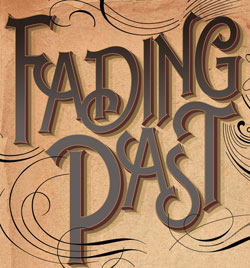
Design by Holly Tempka
“When people say everything’s online,” says Jerry Dupont of the Law Library Microform Consortium, “they’re woefully uninformed.” Dupont, founder of the LLMC, a nonprofit law library cooperative, estimates that of the 2 million unique volumes contained in America’s law libraries, only about 15 percent are available in digital form. That figure includes access via proprietary, commercial services like Westlaw and LexisNexis.
Across the country, law libraries are trying to adapt to the digital revolution and preserve historic and precedential documents. But budget cuts have hit hard at academic law libraries, which historically have hosted some of the most robust legal collections. And the pressures are creating concerns that the public will lose access to essential legal documents.
For example, for six years straight the acquisitions budget for the Maine State Law and Legislative Reference Library has remained flat. Like many law library officials, director John Barden has managed to preserve public access to most legal content, but he has been forced to make some tough calls along the way.
Rising costs have forced him to scrap treatises and cancel nearly half of his print law journal subscriptions. At the same time, his staff has undertaken a massive effort to digitize state legal documents that date back to the 1820s.
“We recognize that at some point flat funding will no longer sustain our information base, but until now we’ve managed to dodge the bullet,” Barden says. “It will be interesting to see what the universe of law-related digitized resources looks like in another 10 or 20 years.”
Dupont is hoping to digitize primary legal information collected for the State Records Microfilm Project, a Depression-era effort to preserve early American law. The project, which involved dispatching field workers over 60,000 miles to collect materials from state historical societies and capital libraries, yielded about 1,700 reels of microfilm. That film contains statutory and administrative records, court records and state government documents.
But because the results are now either tucked away in rare book rooms or lost, they are inaccessible to modern researchers. Digitization will eventually open those records to legal researchers, but that kind of progress comes with a price tag.
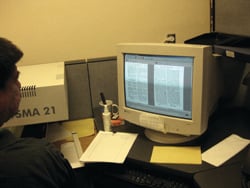
The LLMC vets books at the page level and replaces damaged pages through a global network of libraries. Photo courtesy of FoxandFrank.com.
CASH CRUNCH
According to the most recent survey conducted by the American Association of Law Libraries, nearly 60 percent of its respondents have been making do with less for the past several years. Further, a recent study revealed that more than half of American law libraries believed they would lose physical space over the next few years; the same study projected that materials budgets were expected to decline.
Even the venerable Law Library of Congress, home to the world’s largest legal collection, has felt the impact. According to Law Librarian of Congress David Mao, budget woes have affected the library’s ability to acquire materials, preserve them and make them readily available.
A recent Law Library Journal report on how libraries can manage through the economic downturn concluded that “the general consensus is that the tough times for academic law libraries are permanent.”
Amid this new financial reality, most libraries are simultaneously trying to grow their electronic collections. In fact, the Law Library Microform Consortium is working to convert historic paper into searchable digital form, save it on high-quality film and preserve that precious paper in temperature- and humidity-controlled Kansas salt mines.
While librarians see an enormous upside in increasing public access to material that once was buried in less romantic storage facilities, they are concerned about the accuracy and preservation of legal information that is “born digital,” according to Michelle Wu, director of the Georgetown Law Library.
Wu says the concerns facing modern law libraries are incredibly complex, noting that it’s difficult to keep up with the sheer volume of legal information being generated. She worries about legal information being kept behind subscription walls, and wants to feel confident that libraries have the capacity to capture new information and ensure access to it in perpetuity.
“So much is now represented by what’s online,” Wu says. “The concern is that materials that are not online will disappear from history and won’t be part of our societal knowledge.”
In some states, important legal information is no longer published in books at all. According to the American Association of Law Libraries, numerous states have eliminated some print publications in favor of exclusively online access, including Alaska, Arkansas, Florida, Georgia, Indiana, Michigan, Ohio, South Carolina, Tennessee and Utah. Further, the AALL’s most recent study of state legal resources revealed that 24 states had designated at least one online primary resource as official.
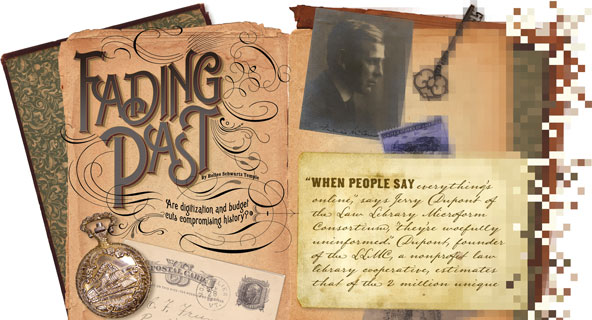
Design by Holly Tempka
AUTHENTIC EFFORTS
Librarians and lawyers are joining forces to guarantee the accuracy of that information, most recently by urging states to pass the Uniform Electronic Legal Material Act. The UELMA ensures that users can verify the trustworthiness of digital material and suggests a framework for states to provide permanent access.
The legislation, approved by the Uniform Law Commission in 2011, requires that official electronic legal material be authenticated using a methodology to determine that digital material hasn’t been altered. It also requires that legal materials be preserved in either electronic or print form and be accessible to the public on a permanent basis.
According to Liz Medaglia, a Washington, D.C., lawyer who chairs the ABA’s Standing Committee on the Law Library of Congress—which has worked on the UELMA and related issues—the goal behind the legislation is to harmonize standards for acceptance of electronic materials across jurisdictional boundaries, and to help lawyers feel confident that the digital material they rely upon is current.
“Preservation and authentication of digital materials is very important to our committee,” Medaglia says. “With the increasing number of materials that are born digital and never get into hard copy, how do you make sure that what you have is accurate, current and preserved? We think the UELMA can help.”
The act lets states choose a preferred preservation format and decide which categories of legal information will be included in the act’s coverage. California and Colorado have already passed versions of the act, and four additional states have introduced legislation in their 2013 sessions. As many as 14 states will likely consider the UELMA and study authentication issues this year, according to standing committee member Lillian Gaskin, another D.C. lawyer.
“It’s really important for the long term to have documents preserved; and for the short term, it’s especially important that lawyers and the public have access to the correct version of legislation and regulations,” Gaskin says.
Kathleen Richman, executive director of the Kaneohe, Hawaii-based Law Library Microform Consortium, says researchers often approach her organization for tough-to-find legal information.
“It happens regularly, a pitter-patter of small discoveries,” says Richman. “But putting it online is just one part. Another side of what we’re doing is making a huge body of literature searchable.”
Dupont adds that municipal codes, regulations and ordinances are particularly tough to find. Because these types of resources are not consulted regularly by many attorneys—therefore commercial publishers lack interest—local laws have become “the most neglected part of the literature.”
“It might seem esoteric, but for the one lawyer who needs it in that one case, it’s essential,” Dupont says. “And the lawyer then has to do detective work and hope some county official kept it and didn’t throw it out because he thought it was getting old.”
Although most state governments are convinced of the long-term savings and increased public access that will eventually result from digitization, the transition is fraught with challenges. Bill Raftery, a knowledge and information services analyst with the National Center for State Courts in Williamsburg, Va., notes that while the two primary issues—ensuring perpetual access to new electronic records and digitizing existing ones—seem relatively straightforward, uniformity is an ongoing problem.
While the federal PACER service provides an effective system for determining whether a party is involved in federal litigation, states have taken a more patchwork approach to both building e-filing systems and digitizing legal materials. The scope of trial-level legal documents available online varies widely. “Research is really hard to come by for state court information,” says Raftery. “In most states there is still not a one-stop shop for finding out if a case even exists.”
Raftery says state court research has become increasingly complex because lawyers must learn to navigate different systems depending on the county of filing, and the systems of two neighboring counties are often incompatible. He notes that Kansas and California invested heavily in case management systems, but individual counties haven’t necessarily adopted the technology.
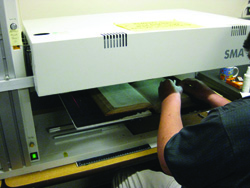
Nondestructive scanning is used for rare books or those with special attributes, such as valuable foldouts. Photo courtesy of FoxandFrank.com.
MAKING IT EASIER
According to Carl Malamud, “Lawyers have some of the worst research tools of the modern era.” Malamud, a longtime public information activist based in Sebastopol, Calif., believes the legal profession should do more to ensure public access, arguing that the problems and costs associated with digitizing “don’t have to be as hard as everyone makes them out to be.”
He cites the California building code, which he uploaded to his website with a small team of programmers, as an example of information that should be available easily and freely for every jurisdiction.
The ideal format for digitized information also complicates matters, says Jean Wenger, president of the American Association of Law Libraries. While PDFs seem to be the trend, librarians are concerned about whether the format will stand the test of time.
“We know what happened to the eight-track tape and floppy disk,” Wenger says.
Wenger is also concerned about access to justice and says it is a myth that lawyers and citizens can easily find all the legal information they need on the Internet.
In her work at the Cook County Law Library in Chicago, Wenger estimates that half of her patron base is composed of pro se litigants who have no legal research training. About a third of Wenger’s patrons are looking for a prior version of legislation, which is often not digitally available. That’s when the librarian’s value takes center stage, she says.
“It’s easy for people [with budget axes] to go after a library,” Wenger says. “But libraries are not just places holding books. We have expertise in all forms of research to help people find what they need.”
And while it may seem that legal research should be easier with the addition of so many online tools, in some ways it’s more complicated, says Georgetown Law’s Wu. Where print research relied on a linear process, the transition to Internet research often requires mastery of multiple websites with different search mechanisms. Accuracy and reliability are often hard for the novice researcher to determine.
“What makes it difficult is that each source has a different searching structure that we have to understand,” Wu says. “We have to teach strategies and look for the rules of the individual database. Instead of just terms and connectors, we tell them to look for search guidance for each site.”
Some experts believe government and the legal academy should work together to create a freely available and comprehensive digital library of American law. Wu says that project hasn’t been undertaken because “there are so many different players and interests, and who will bear the cost for building it?”
She notes that even the first layer of primary authority hasn’t been comprehensively collected and published in a single spot. Secondary materials, which are almost all subject to copyright protection, complicate publication even further.
Nevertheless, individual libraries are steadily making progress in their efforts to go digital. The Law Library of Congress is revamping its Internet offerings via the new Congress.gov site, which is expected to move out of beta phase by year’s end. The site now contains federal legislation from 2001 to the present, and the past two years of the Congressional Record are available online.
As for state law research, the progress might not be uniform, but it’s there. The process of digitizing was daunting for Glen Dickinson, who directs Iowa’s Legislative Services Agency, but a partnership with the LLMC eased the transition.
The LSA in Des Moines publishes most of the legal documents for the state of Iowa, so Dickinson had his work cut out for him when he began the process of converting state materials to digital format. He first tried an in-house approach, then an outsourcing arrangement. The slow, costly process resulted in a system that was not ideal or complete.
“But it’s better than trying to find an 1886 session law on a shelf,” Dickinson says.
Dickinson then learned about services offered through the Law Library Microform Consortium’s digital branch—LLMC Digital, a cooperative of libraries offering a budget-friendly way to accurately digitize while preserving paper copies. The LLMC’s members, which include almost all of the country’s academic law libraries and all federal court libraries, are then able to access all digital copies in the collection, which now numbers more than 42 million exact-image page scans. The nonprofit adds a preservation benefit for print copies: Once the content is digitized, it can be archivally wrapped.
But getting LLMC Digital’s help wasn’t the end of Dickinson’s problems. Many of the document pages were particularly fragile because in the late 1800s, paper manufacturers began using acid-laden wood pulp. State documents produced between the 1890s and 1950s were browning and disintegrating rapidly because of acid in their composition. “Much of the paper was half dead by the time we got it, or worse,” Dupont says. “When we turned the page to scan it, it was often the last turn. The paper would disintegrate in front of our eyes.”
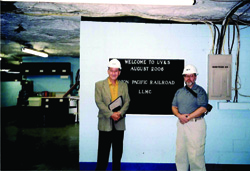
Jerry Dupont and board member Richard Amelung visited the salt mine facility 650 feet underground. Photo courtesy of Richard Amelung.
DEEP STRATEGY
Almost all of the LLMC’s print collection is specially boxed for preservation in salt mines 650 feet below ground in Hutchinson, Kan. The materials are preserved in a 400-foot-thick rock salt cocoon that is accessible only by a minute-long ride down a freight elevator. The underground storage facility offers sophisticated security procedures, including biometric scans and infrared monitors.
While the LLMC isn’t equipped to digitize the entirety of primary American legal authority immediately, Dupont has worked with a handful of states to build out digital collections. Because the consortium has the equipment and expertise to accurately scan legal materials, states that don’t have the budget to create their own in-house systems can “jump the learning curve” by partnering with the nonprofit, he says.
For example, the state of California collaborated with the LLMC to digitize the entirety of the state’s session laws, which are now available to the public through member law library subscriptions.
“The most effective solution is to get libraries to work together,” Dupont says. “The commercial databases just aren’t going to do it because it’s not going to be profitable.”
The LLMC solution is working for Dickinson, who has now posted all of Iowa’s session laws online; the state code is in progress, and the Iowa House and Senate journals are next in line.
“We’re trying to give citizens the ability to find materials as easily as possible in a number of different ways,” Dickinson says. “Just making in-formation available in electronic format increases access because people don’t have to come down to the capital and find the research in the law library during set hours.”
Dickinson is also working to create the capability for searching within the expanded digital collection.
“There is so much material that people would like to see and access, and you have to take one step at a time,” Dickinson says. “Getting it digitized and putting a collection together is a really cool process.”
Hollee Schwartz Temple, co-author of Good Enough Is the New Perfect, directs the legal research and writing program at West Virginia University College of Law.



